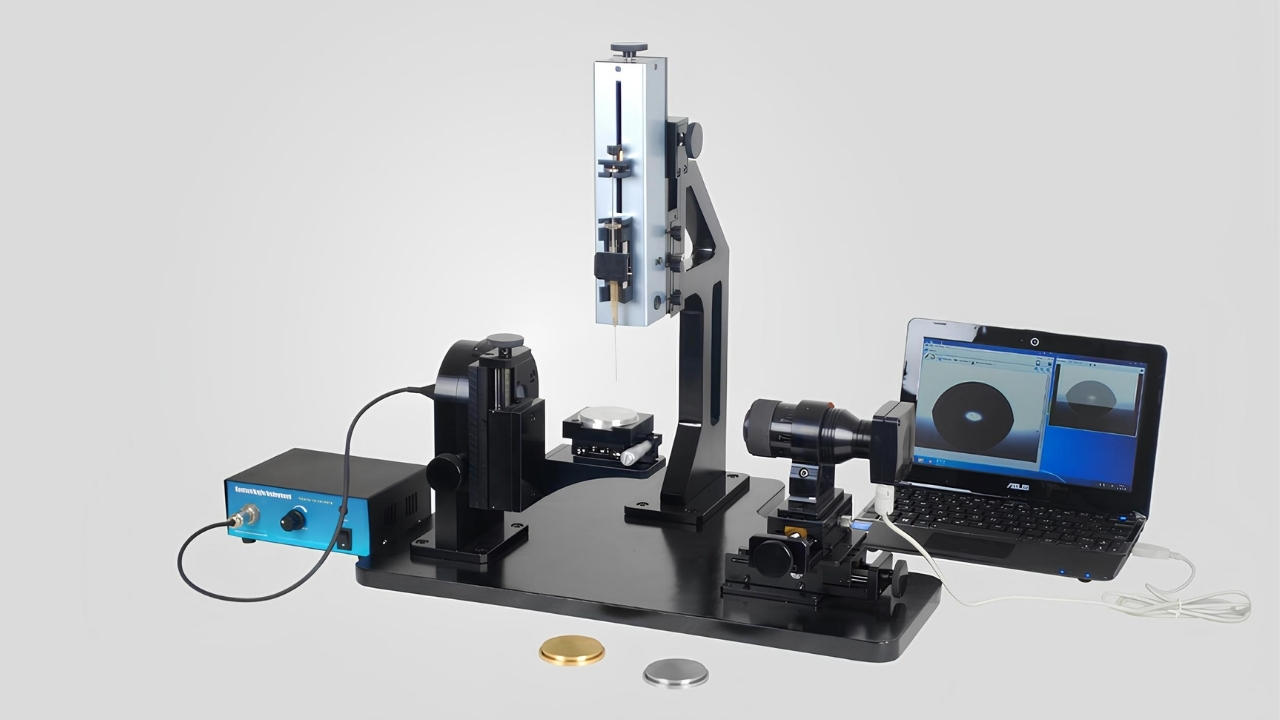
What is a contact angle goniometer? A contact angle goniometer measures the angle formed between a liquid drop and a solid surface. This angle helps determine the wettability of the surface, which is crucial in fields like material science, chemistry, and engineering. By understanding how a liquid interacts with a surface, scientists can predict behaviors like adhesion, spreading, and absorption. These devices are essential for developing new materials, coatings, and treatments. Whether you're working with waterproof fabrics, medical implants, or advanced electronics, knowing the contact angle can provide valuable insights. Curious about how this tool works and its applications? Keep reading to uncover 26 fascinating facts about contact angle goniometers!
What is a Contact Angle Goniometer?
A contact angle goniometer measures the angle formed between a liquid droplet and a solid surface. This angle helps determine the wettability of the surface. Here are some intriguing facts about this fascinating instrument.
-
Invented in the 1800s
The first contact angle goniometer was invented in the 1800s. Early versions were quite rudimentary compared to today's advanced models. -
Used in Surface Science
These instruments are crucial in surface science, helping researchers understand how liquids interact with different materials. -
Measures Wettability
Wettability is a material's ability to maintain contact with a liquid. A high contact angle means poor wettability, while a low angle indicates good wettability.
How Does a Contact Angle Goniometer Work?
Understanding the working mechanism of a contact angle goniometer can be quite fascinating. Here’s a closer look at how these devices operate.
-
Droplet Placement
A small droplet of liquid is placed on the surface of the material being tested. -
Angle Measurement
The instrument measures the angle formed between the droplet and the surface using a high-resolution camera and software. -
Image Analysis
Advanced software analyzes the captured images to determine the contact angle accurately.
Applications of Contact Angle Goniometers
Contact angle goniometers have a wide range of applications across various industries. Here are some key areas where they are used.
-
Coating Industry
In the coating industry, these instruments help assess the adhesion properties of paints and coatings. -
Pharmaceuticals
Pharmaceutical companies use them to study tablet coatings and drug delivery systems. -
Textile Industry
In textiles, they help evaluate the water-repellent properties of fabrics.
Types of Contact Angle Goniometers
There are different types of contact angle goniometers, each designed for specific applications. Let’s explore some of them.
-
Manual Goniometers
Manual goniometers require the user to place the droplet and measure the angle manually. -
Automated Goniometers
Automated versions use robotics and software to place the droplet and measure the angle, reducing human error. -
Dynamic Goniometers
These measure the contact angle as the droplet spreads or retracts, providing more detailed information about the surface.
Importance in Research and Development
Contact angle goniometers play a vital role in research and development across multiple fields. Here’s why they are so important.
-
Material Development
They help in developing new materials with specific wettability properties. -
Quality Control
In manufacturing, they ensure that products meet quality standards regarding surface properties. -
Environmental Studies
Researchers use them to study how pollutants interact with different surfaces.
Factors Affecting Contact Angle Measurements
Several factors can influence the accuracy of contact angle measurements. Understanding these can help in obtaining more reliable results.
-
Surface Roughness
A rough surface can lead to inconsistent measurements. -
Temperature
Temperature variations can affect the liquid's properties, altering the contact angle. -
Humidity
High humidity levels can cause the liquid to spread more, affecting the angle.
Advanced Features in Modern Goniometers
Modern contact angle goniometers come equipped with advanced features that enhance their functionality. Here are some of the latest advancements.
-
High-Resolution Cameras
These cameras capture detailed images, allowing for more accurate measurements. -
Automated Droplet Dispensers
Automated dispensers ensure consistent droplet size, improving measurement reliability. -
Software Integration
Advanced software can analyze multiple parameters simultaneously, providing comprehensive data.
Fun Facts About Contact Angle Goniometers
Let’s dive into some fun and lesser-known facts about these intriguing instruments.
-
Used in Space Research
NASA has used contact angle goniometers to study how liquids behave in microgravity. -
Educational Tools
Many universities use them as educational tools to teach students about surface science. -
Art Conservation
Art conservators use them to study the properties of varnishes and coatings on historical artifacts. -
Food Industry
In the food industry, they help in developing packaging materials that repel water and oils. -
Cosmetics
Cosmetic companies use them to test the spreadability and adhesion of creams and lotions.
The Final Word on Contact Angle Goniometers
Contact angle goniometers are essential tools in surface science. They measure the angle where a liquid meets a solid surface, revealing crucial info about wettability and surface energy. These devices help in industries like coatings, pharmaceuticals, and electronics, ensuring products perform as expected.
Understanding how to use a goniometer can improve product quality and innovation. From simple manual models to advanced automated systems, there's a goniometer for every need. Whether you're a researcher or a quality control specialist, mastering this tool can give you a competitive edge.
So, next time you encounter a surface interaction problem, remember the contact angle goniometer. It might just be the key to unlocking your solution. Keep exploring, keep measuring, and keep pushing the boundaries of what's possible with this fascinating instrument.
Was this page helpful?
Our commitment to delivering trustworthy and engaging content is at the heart of what we do. Each fact on our site is contributed by real users like you, bringing a wealth of diverse insights and information. To ensure the highest standards of accuracy and reliability, our dedicated editors meticulously review each submission. This process guarantees that the facts we share are not only fascinating but also credible. Trust in our commitment to quality and authenticity as you explore and learn with us.
